
The Yenisei also Romanised Yenisey, Enisei, Jenisej, is the largest river system flowing to the Arctic Ocean. It is the central of the three great Siberian rivers that flow into the Arctic Ocean. Rising in Mongolia, it follows a northerly course to the Yenisei Gulf in the Kara Sea, draining a large part of central Siberia, the longest stream following the Yenisei-Angara-Selenga-Ider river system.

The Trans-Siberian Railway is a network of railways connecting Moscow with the Russian Far East. With a length of 9,289 kilometres, from Moscow to Vladivostok, it is the longest railway line in the world. There are connecting branch lines into Mongolia, China and North Korea. It has connected Moscow with Vladivostok since 1916, and is still being expanded.
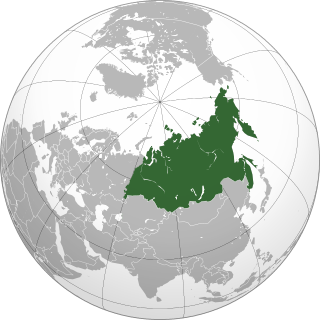
North Asia or Northern Asia, sometimes known as Siberia or Eurasia, is partly a subregion of Asia, consisting of the Russian regions east of the Ural Mountains: Siberia, Ural and the Russian Far East. The region is sometimes also referred to as Asian Russia. North Asia is bordered to the north by the Arctic Ocean, to the west by Eastern Europe, to the south by Central and East Asia, and to the east by the Pacific Ocean and North America. North Asia covers an area of approximately 13,100,000 square kilometres (5,100,000 sq mi) or 8.8% of the earth's land area, or 1.5 times the size of Brazil. It is the largest subregion of Asia by area, but is also the least populated, with an approximate total population of only 33 million people or 0.74% of Asia’s population. North Asia is solely administrated by Russia, and makes up more than 75% of the territory of the country, but only 22% of its population, at a density of 2.5 people per km2. The region of Western Siberia and occasionally Kazakhstan is usually called as Northwestern Asia or Northwest Asia;, although the name sometimes refers to Caucasus or nearby provinces.
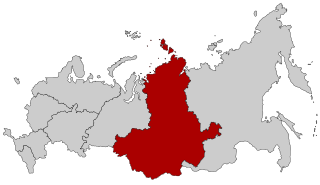
Siberian Federal District is one of the eight federal districts of Russia. Its population was 17,178,298 according to the 2010 Census, living in an area of 4,361,800 square kilometers (1,684,100 sq mi). The entire federal district lies within the continent of Asia.

Trans-Siberian Orchestra (TSO) is an American rock band founded in 1996 by producer, composer, and lyricist Paul O'Neill, who brought together Jon Oliva and Al Pitrelli and keyboardist and co-producer Robert Kinkel to form the core of the creative team. The band gained in popularity when they began touring in 1999 after completing their second album, The Christmas Attic, the year previous. In 2007, the Washington Post referred to them as "an arena-rock juggernaut" and described their music as "Pink Floyd meets Yes and the Who at Radio City Music Hall." TSO has sold more than 10 million concert tickets and over 10 million albums. The band has released a series of rock operas: Christmas Eve and Other Stories, The Christmas Attic, Beethoven's Last Night, The Lost Christmas Eve, their two-disc Night Castle and Letters From the Labyrinth. Trans-Siberian Orchestra is also known for their extensive charity work and elaborate concerts, which include a string section, a light show, lasers, "enough pyro to be seen from the International Space Station", moving trusses, video screens, and effects synchronized to music.

The Chinese Eastern Railway or CER (Chinese: trad. 東清鐵路, simp. 东清铁路, Dōngqīng Tiělù; Russian: Китайско-Восточная железная дорога or КВЖД, Kitaysko-Vostochnaya Zheleznaya Doroga or KVZhD), also known as the Chinese Far East Railway and North Manchuria Railway, is the historical name for a railway across Manchuria.

The Siberian tiger is a tiger population in the Far East, particularly the Russian Far East and Northeast China. This population inhabits mainly the Sikhote Alin mountain region in southwest Primorye Province in the Russian Far East. The Siberian tiger once ranged throughout Korea, north China, Russian Far East, and eastern Mongolia. In 2005, there were 331–393 adult and subadult Siberian tigers in this region, with a breeding adult population of about 250 individuals. The population had been stable for more than a decade due to intensive conservation efforts, but partial surveys conducted after 2005 indicate that the Russian tiger population was declining. An initial census held in 2015 indicated that the Siberian tiger population had increased to 480–540 individuals in the Russian Far East, including 100 cubs. This was followed up by a more detailed census which revealed there was a total population of 562 wild Siberian tigers in Russia.
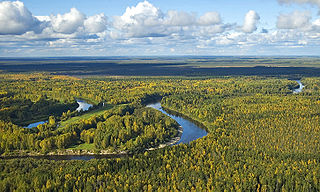
The West Siberian Plain, also known as Zapadno-sibirskaya Ravnina, is a large plain that occupies the western portion of Siberia, between the Ural Mountains in the west and the Yenisei River in the east, and by the Altay Mountains on the southeast. Much of the plain is poorly drained and consists of some of the world's largest swamps and floodplains. Important cities include Omsk, Novosibirsk, Tomsk and Chelyabinsk.

Sirenik Yupik, Sireniki Yupik, Sirenik, or Sirenikskiy is an extinct Eskimo–Aleut language. It was spoken in and around the village of Sireniki (Сиреники) in Chukotka Peninsula, Chukotka Autonomous Okrug, Russia. The language shift has been a long process, ending in total language death. In January 1997, the last native speaker of the language, a woman named Vyjye, died. Ever since that point, the language has been extinct; nowadays, all Sirenik Eskimos speak Siberian Yupik or Russian.

The Siberian is a landrace variety of domestic cat, present in Russia for centuries, and more recently developed as a formal breed, with standards promulgated since the late 1980s.
The Siberian High is a massive collection of cold dry air that accumulates in the northeastern part of Eurasia from September until April. It is usually centered on Lake Baikal. It reaches its greatest size and strength in the winter when the air temperature near the center of the high-pressure area is often lower than −40 °C (−40 °F). The atmospheric pressure is often above 1,040 millibars (31 inHg). The Siberian High is the strongest semi-permanent high in the northern hemisphere and is responsible for both the lowest temperature in the Northern Hemisphere, of −67.8 °C (−90.0 °F) on 15 January 1885 at Verkhoyansk, and the highest pressure, 1083.8 mbar at Agata, Krasnoyarsk Krai on 31 December 1968, ever recorded. The Siberian High is responsible both for severe winter cold and attendant dry conditions with little snow and few or no glaciers across Siberia, Mongolia, and China. During the summer, the Siberian High is largely replaced by the Asiatic low.
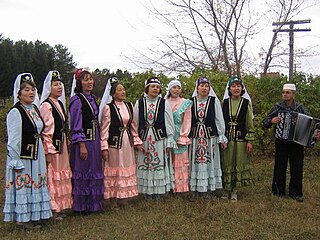
Siberian Tatars, the indigenous Tatar population of the forests and steppes of South Siberia, originate in areas stretching from somewhat east of the Ural Mountains to the Yenisei River in Russia. The Siberian Tatars call themselves Yerle Qalyq, to distinguish themselves from more recent Volga Tatar immigrants to the region.

Means Of Production is a compilation of Aim's early 12" and EP releases, recorded between 1995 and 1998.

The Siberian roe deer or eastern roe deer is a species of roe deer found in northeastern Asia. In addition to Siberia and Mongolia, it is found in Kazakhstan, the Tian Shan Mountains of Kyrgyzstan, eastern Tibet, the Korean Peninsula, and northeastern China (Manchuria).

The West Siberian Laika or WSL, is a breed of hunting dog and a breed of spitz type. Russian publications indicate that the term West Siberian Laika loosely applied to hunting dogs originating with the Mansi and Khanty people in Ural and West Siberia, but there were no standards or registrations of WSL as such until 1930. Then WWll disrupted it for a while, but systematic breeding with registrations resumed after the war ended, in 1946. This was the time the breed began taking modern shape. Before that hunters only knew of Mansi Laika and Khanty Laika. In early 1960 many hunters in Ural still preferred the term Mansi Laika, when speaking of West Siberian Laika. In Russian language, the term Laika originated from the word layat that means to bark. The word Laika simply means barker. Any hunting Laika is a bark pointer. It is a versatile dog depending on use and environment, but in certain parts of the country they have become more specialized.
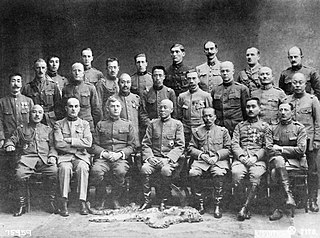
The Siberian Intervention or Siberian Expedition of 1918–1922 was the dispatch of troops of the Entente powers to the Russian Maritime Provinces as part of a larger effort by the western powers and Japan and China to support White Russian forces against Soviet Russia and its allies during the Russian Civil War. The Imperial Japanese Army continued to occupy Siberia even after other Allied forces withdrew in 1920.
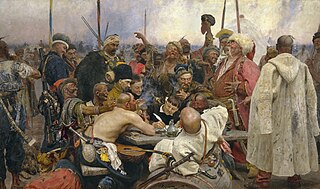
Siberian Cossacks were Cossacks who settled in the Siberian region of Russia from the end of the 16th century, following Yermak Timofeyevich's conquest of Siberia. In early periods, practically the whole Russian population in Siberia, especially the serving-men, were called Cossacks, but only in the loose sense of being neither land-owners nor peasants. Most of these people came from northwest Russia and had little connection to the Don Cossacks or Zaporozhian Cossacks.
Siberian Tatar is a Turkic language spoken in Western Siberia region of Russia.

















